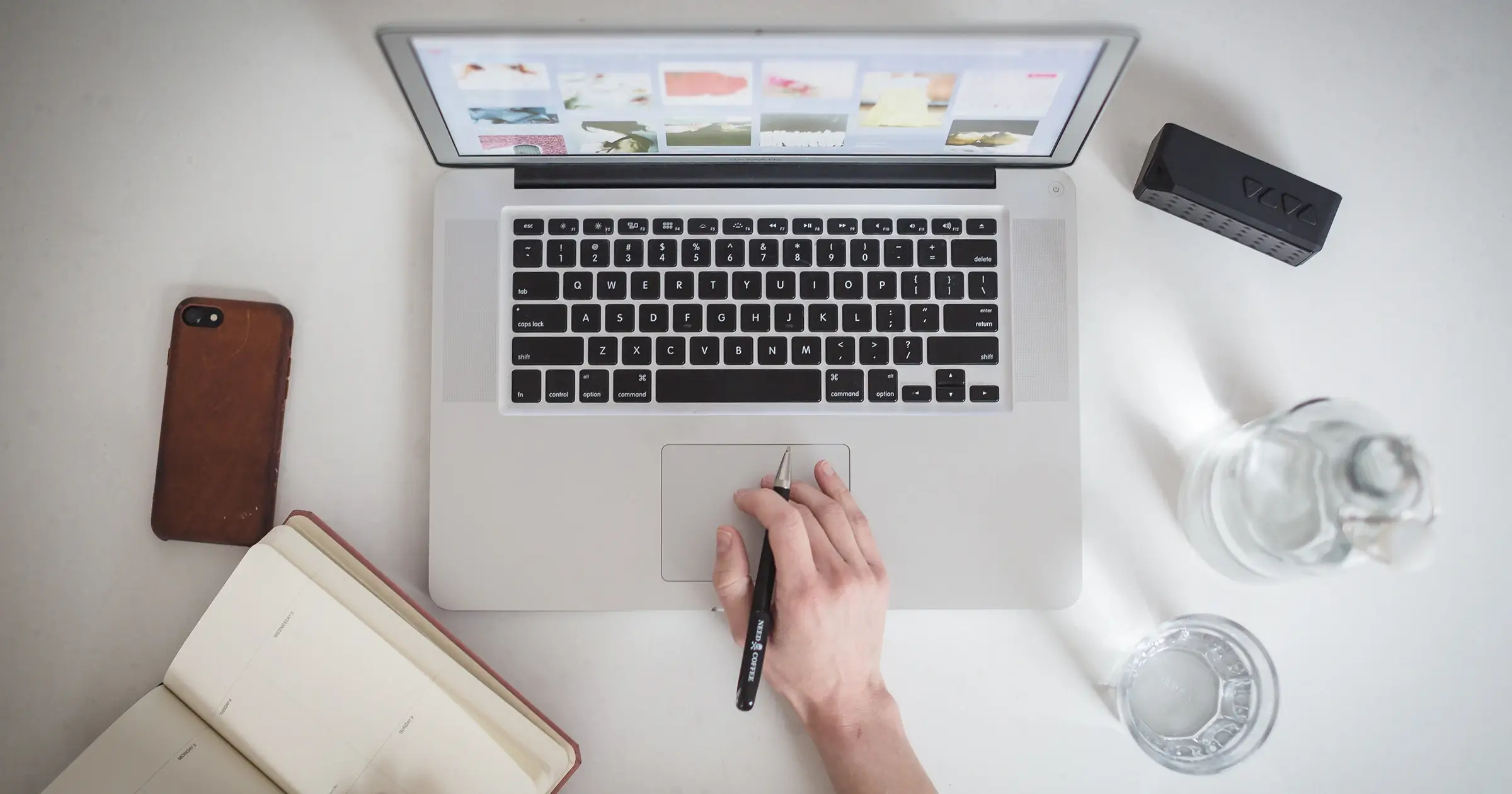The ultimate guide to proposals: Why proposals fail

If you’re reading this then chances are your proposals are under-performing and you don’t know why. As designers we dislike writing proposals. We worry about all sorts of things: Am I too expensive? Am I too cheap, too eager, too slow to respond, have I understood the client, do I even know if I can provide real value…? The list is endless.
But you might be surprised to hear that most proposals don’t fail because they're priced to high, too low or look like they were thrown together in Word. Most proposals fail because they fail to understand the client's problem. They fail to convey one simple message, “They get me”.
If you fail to understand a client’s problem you can’t communicate an effective solution. If you can’t communicate an effective solution then you’re seen as a risk and not an asset.
As designers we all like to think that great design can change the world, but if our work doesn’t solve a very specific problem it’s mere eye candy. You need to dig deeper to discover how you can actually help the client. Weak “me” orientated proposals glaze over the needs of a client and tend to either:
A. Focus on the bogus skillz of the freelancer. (Bill and Teds reference for you younguns)
Or
B. Prescribe canned solutions to generic problems.
Neither of these approaches is going to work for you in the long run.
Your competition is actually no competition for you
It doesn’t matter how good your design chops are, if you can’t pull it altogether in a proposal then you’re dead wood. The good news? The bar has been set incredibly low for designers. I once had a client describe our community as being "worse than used cars salesmen" (I should point out he wasn't referring to me). When the standard is that low it only takes the smallest effort to stand shoulders above the rest.
Many designers draft their proposals with the bare minimum of information. They pick a number, usually their hourly rate and multiply it by the estimated project length; this is then packaged up into a Word or Indesign template and sent off via email.
That's it. That's your competition.
And this happens over and over on a daily basis. We’re not taught to do otherwise. So you either learn the hard way (like myself) or you read a great series on how to write winning proposals… like this one!
For years I didn’t know there was any other way to create a proposal. I’d receive the “I need a website” email, the potential client would fill out my project planner and based on those answers I’d pretty much jump straight into a proposal. Looking back it seems a little absurd. Imagine building a car for someone based on a quick questionnaire or project planner. I’d be left with a lot of crappy cars in my driveway and more than a few unhappy clients.
But anything worth while requires a little effort
Providing a comprehensive service is about pushing back and asking questions, extensively if need be. People at the top of their game don’t get there without asking lots of questions. You should aim to spend time with a client before you get anywhere near a proposal. You need to dig deeper, you need to push for the truth behind their apparent needs. We’ll get to what to ask a little later on in the series.
But you know what? Good clients want you to ask awkward questions, they want you to understand. When you take the initiative to keep asking why, and to push back against the brief (if there was one), you establish yourself as someone who’s more than a hack. You establish yourself as a professional. You become somebody who gives a damn.
The more often you can engage a client before presenting a proposal, the greater your chances of hearing the magic three letter word, "YES".
If nothing else from this series sticks with you, let it be this. A proposal acts as reinforcement of your understanding. A proposal is not an isolated product; it cannot effectively exist without client input.
Don’t believe me? Let me explain…
The big client – designer disconnect
When a lead hits your inbox you typically have little to no connection with the potential client. It's likely she (the client) bumped into your portfolio whilst trawling the Internet for design talent. She was impressed enough to add you to her list, and off went the “Dear Designer” email.
And here’s the problem…
With no real connection you have no credibility or authority. You’re an email address, with about as much influence. This means your proposal will be judged, almost entirely on price. Other than your mad design skillz (don’t count on those to win a proposal) the client has little else to go on. But what could you do? Everything you needed was in the initial client email, right?
Unfortunately not…
At this point you simply don’t have enough information to write a convincing, problem solving proposal. Until you can establish meaningful dialogue, you'll be one more anonymous, uninformed proposal hitting the client’s inbox.

So why are we so badly informed about our clients' needs?
Most clients are in a hurry. Therefore most designers are in a hurry. We worry that if a proposal isn’t drafted and sent out by the end of the day that we’ll lose the client. And in some instances that’s true. But good clients are looking for designers who can help their business. They’re looking for the designer who understands why they need this website or why they need this app. They need a solution, not (just) a pretty picture.
In the hurry to take on new work it can be tempting to go along with anything a client asks of you. They’re paying, so you shut up and get on with it. But when you blindly accept the requests of a client you inevitably pay the price. It’s happened to me, several times. Even if you manage to win a project without pushing back, you will ultimately fail your client, and here’s why… a pretty design, even a well thought-out pretty design, is unlikely to fulfil the business needs of your client. This means that as soon as the project is finished and the real goals of your client are left untouched, (more signups, more trials, more trial to paid, more tweets, more followers etc.) your client will attribute all blame to your work and lack of understanding about his business. You won’t receive any more work from them, and it’s unlikely they’ll be making any recommendations or referrals. All this from failure to understand the real needs of your client and the ability to communicate this back to them. Repeat work and referrals are the golden fleece of the freelance design world, and they’re both tied in to a great proposal.
Finding the “Why” behind a project will dictate your proposal
Take a look at this fictitious exchange between a client and her designer; it shows that understanding the real reasons behind a client’s project can change the entire approach you take to writing a proposal and executing a project.
Client: Hey there Jenny! I need a website to showcase my new book.
Designer: That's great. What are you hoping the website will do for you exactly?
Client: Uh, it's my first book so I need to promote it somehow. Duh!
Designer: OK. It's your first book. So, you're trying to generate interest. I guess you'll be offering a free sample or something? Have you thought about how you'll get people to the site or what you'll want them to do once they get there?
Client: To be honest, visits and user interaction aren't of much interest at the moment. I need the site to act as a promotional tool when I'm talking to publishers in the city.
Boom!
OK, so I made that one easy, but if Jenny had taken the request at face value she'd have written an entirely different proposal. It’s more than likely she would have failed to achieve the client’s real goals. It’s all too easy to imagine what a client wants or needs, but a eureka moment like this changes everything. All of a sudden you start to see through the Matrix, you can now out manoeuvre those slo-mo bullets, get the love interest and save the world.
Knowing why your client really needs a website will set you off in the right direction. It will change the way you look at a project, and it will dictate the solutions you put forward. It will put you ahead of your competitors before you even begin.
And bare in mind, nobody else has bothered to do this; the other designers are putting together proposals based on design trends, technical solutions, languages and all kinds of buzzwordery crap that means nothing to the client. Now you understand the client you can speak to him in plain English, you can describe just how you're going to solve their problem.
I hope you can already see how it’s possible to put yourself in a winning position before you even get as far as the proposal. However not all clients want to spend time investigating their business needs, and you know what happens to those clients? They end up with an inferior product. They end up with a pretty design that fails their business on every level…other than looking pretty. They’ll wish they'd put aside a few hours and talked with someone like you.
Good luck!

This post forms part of The Ultimate Guide to Proposals. All your proposal questions answered.